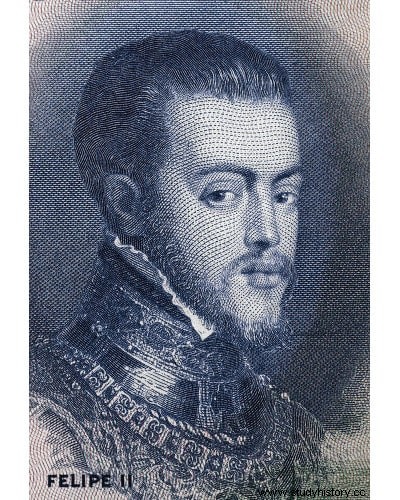
The Iberian Union It is a period in the history of Portugal and the colonization of Brazil that took place between 1580 and 1640. It was characterized by the union of the Crowns of Portugal and Spain. The possessions that belonged to the Portuguese Empire came to be controlled by the Spanish Empire. The Iberian Union had as a great consequence the attacks promoted by the Dutch to the Northeast of Brazil.
Why did the Iberian Union take place?
The Iberian Union began because of a dynastic crisis that hit Portugal at the end of the 16th century. It all started when King D. Sebastian disappeared during the battle of Alcácer-Quibir , battle fought between Portuguese and Moroccans in 1578. The body of the Portuguese king was never found. Thus, it was assumed, at the time, that the king had died.
The death of King D. Sebastião put the Portuguese dynasty in trouble, as the Portuguese king had no direct heirs, thus forcing his great-uncle, D. Henrique , to assume the throne of Portugal. Just two years after assuming the Portuguese throne, D. Henrique died and, as he also had no direct heirs, a crisis began in the Avis dynasty.
With the crisis of Portugal's dynastic succession, three postulants to the Portuguese throne emerged:
-
Antonio, Prior of Crato;
-
Catarina from Portugal;
-
Philip II, King of Spain.
Antonio, prior of Crato, was acclaimed king by his supporters in the village of Santarém, but ended up being defeated by the forces of Filipe II during a battle fought in August 1580. Filipe II, in addition to being a Spanish king and having a lot of power, had the support of a large part of the Portuguese nobility. Thus, he managed to impose himself against Antonio.
With the coronation, Philip II became known as Philip I of Portugal and II of Spain , accumulating the throne of the two nations. In 1580, the Iberian Union began. From that moment on, all Portuguese possessions came under the control of the Spaniards, which, of course, included Brazil.
The Spanish administration of Portugal and its colonies was characterized by caution. In order not to displease the Portuguese and to avoid the risk of revolts, Filipe II chose to keep Portuguese affairs under the responsibility of the Portuguese. Even so, the Iberian Union ended up generating reflexes in Portuguese territories.
Firstly, with the Iberian Union, the imaginary division that separated the territories in America between Portuguese and Spaniards came to an end. With the end of the division imposed by the Treaty of Tordesillas , both Portuguese and Spaniards had free access to territories that, until then, they could not penetrate. The long-term result of this was the settlement of “Spanish territories” by the Portuguese, as in the case of Rio Grande do Sul.
The Dutch invasion of the Northeast
The second reflection of the Iberian Union in Brazil was the attacks promoted by the Dutch against the Northeast of Brazil. These attacks were a direct result of the enmity that existed between the Dutch and the Spaniards, who, at that time, fought the Eighty Years' War . This war was the result of the Dutch fight for their independence.
Before the Iberian Union, the Dutch had a stake in the marketing of sugar produced in Brazil. When the Iberian Union began, and Brazil became a Spanish domain, the Dutch found a way to hit the Spaniards in retaliation for the war they were waging:attack Brazil and take control of sugar production and marketing.
Also see: Dutch Mercantilism
That's why the Dutch carried out several attacks against territories that had been Portuguese colonies. First, there was an attack on the coast of Africa in 1595; a few years later, several Dutch attacks were carried out against Salvador:there were attacks in 1604, 1624 and 1627.
The last Dutch onslaught against the Brazilian Northeast took place in 1630 when Olinda and Reef were attacked by the Dutch. This fact started the Dutch domination over Pernambuco. The Dutch dominated the region for 24 years, that is, they remained in the region from 1630 to 1654.
The administration of this region became the responsibility of the West India Company, who delegated that the territory would be administered by the German Mauritius of Nassau. During his regency, Nassau ordered the reconstruction of the region. Public works, such as bridges, were authorized, and artists and intellectuals were encouraged to come to Recife. In addition, religious freedom was promoted in Pernambuco. Nassau's regency lasted until 1644.
End of the Iberian Union
In 1640, the Portuguese Restoration , a movement that put an end to the Iberian Union. During this event, the Portuguese engaged in the struggle to regain control of their territories, including the colonies. A war was fought which resulted in the expulsion of the Spaniards and the coronation of D. John IV , a fact that marked the beginning of the Bragança dynasty .
After the Portuguese regained control of their throne and territories, they began a struggle against the Dutch to expel them from Pernambuco. This fight became known as Brasílicas Wars and it took place in 1654, the year in which the Dutch were definitively expelled from Pernambuco.
